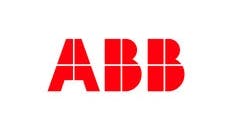What must you consider in choosing the right resources for your microgrid? What role might renewable energy, fossil fuels, fuel cells, energy storage and electric vehicles play? What is the upside and downside of each?
Microgrid Knowledge asked experts at Microgrid 2021 to weigh in on these questions in a series of interviews. Below Ethan Howland offers some of the highlights from the discussions.
Tim Victor, Scale Microgrid Solutions
How much resilience?
To start, microgrid hosts should know what problems they are trying to solve in three key areas: resilience, sustainability and economics, according to Tim Victor, a Scale Microgrid Solutions analyst.
When it comes to resilience, a microgrid host needs to define whether it needs to keep the power running during a grid outage for hours or days, according to Victor. The level of desired resilience may affect what types of resources are used in the microgrid, he said.
A natural gas generator, typically supplied via pipelines, can provide reliable backup power for long periods, said Klaus Payrhuber, strategic product development manager at INNIO Jenbacher, an Austrian company that makes gas engines.
Compared to diesel backup generators, natural gas has a quarter less carbon dioxide emissions, 80% fewer nitrogen oxide emissions and zero particulate emissions, Payrhuber said.
And another advantage, he said, natural gas generators can provide inertia to help keep a microgrid stable.
For customers aiming to cut their greenhouse gas emissions, natural gas-fired generators can burn renewable fuels such as biogas and hydrogen, Payrhuber said, noting that about half of installed INNIO Jenbacher engines are running on renewable fuels.
Victor expects renewable hydrogen fuels will be commercially viable in the next five years or so, depending on governmental policies.
Another option is battery storage, which has low operating costs but can typically discharge for only up to four hours, providing limited resiliency benefits, according to Victor and Payrhuber.
One of the positive features battery storage can bring is economic benefits from shifting and reducing load, which can lower overall energy costs.
“So it’s kind of a push and a pull where for higher resilience, we’re going to leave more energy in that battery, which means that we’re going to have less economic output,” Victor said.
Another consideration on the resiliency front, is how quickly a microgrid host wants to be able to island from the rest of the grid, according to Michael Boswell, vice president of distributed generation projects for Concord Engineering.
In the case of a critical manufacturing facility where fractions of a second of a power loss matters, being able to instantly island off the grid becomes a critical input into designing the microgrid, according to Boswell.
Options for seamless grid separating include load shedding switching gear, segregating switches and batteries, Boswell said.
“These things can get to be really interesting puzzles, but these levels of complexity certainly add cost,” Boswell said. “These are the things that kind of need to get sorted out early on.”
Klaus Payrhuber, INNIO Jenbacher
Meeting sustainability goals
Often, microgrid hosts hope that components of their systems, such as solar power, can help them meet their sustainability goals, according to the panelists.
However, adding renewable components can make it harder to meet resiliency goals because of the intermittent nature of wind and solar, according to Victor.
In cases where a customer has high carbon reduction goals, Scale Microgrid Solutions looks at combining solar photovoltaics with energy storage, Victor said.
By carefully matching the size of the battery and solar systems to a facility’s electric use, it is possible to provide four to six hours of backup power and, in some larger projects, up to 16 hours, he said.
The role of electric vehicles
Another issue potential microgrid customers should think about is their use of electric vehicles (EVs), which can create challenges and opportunities in designing microgrids.
A microgrid that is hosting a fleet of EVs may need to have more operational flexibility to handle different charging times for the EVs, according to Victor. The microgrid may include more dispatchable generation or more battery storage than normal to make sure EVs can be charged when needed, he said.
Michael Boswell
Perhaps the biggest challenge with EVs is preparing a microgrid for what could be a growing fleet of EVs, according to Victor.
Companies may plan to grow their EV fleets over time and the microgrid needs to be able to handle that growth, he said.
Working under an energy services agreement, a company like Scale Microgrid Solutions can help to make sure the resources in a microgrid are added over time to match the customer’s growing EV fleet, Victor said.
“We can really work together with the customer, identify the best times to deploy new infrastructure and to match those new loads that are showing up, and we can do so over the long term to provide what is essentially the lowest total cost of ownership of that infrastructure,” Victor said.
“It’s essentially just building the pieces, piece by piece in the right way, so that your system is always ready to go, but we’re also doing it in the most economic fashion.”
John Glassmire, Hitachi ABB Power Grids
Using existing microgrids as a model
After figuring out what a potential microgrid host aims to achieve — lowering energy costs, boosting resiliency or cutting carbon emissions — it makes sense to look at existing microgrids as models, according to John Glassmire, senior advisor at Grid Edge Solutions, Hitachi ABB Power Grids.
“Make sure you go and learn from what’s been done because … you don’t have to create it from scratch,” Glassmire said.
Designing a microgrid is like using Lego building blocks, according to Glassmire. “You can put them together to meet whatever requirements you have,” he said.
In one microgrid model, Glassmire worked with Snohomish County Public Utility District (PUD) in Washington to help the public power utility set up a microgrid.
Scott Gibson, Snohomish County PUD
The system includes a 500-kW solar array, a 1-MW/1.4-MWh battery and two bidirectional, 10-kW EV chargers that can feed power onto the grid from the vehicles, according to Scott Gibson, Snohomish County PUD project manager. It also has a 350-kW diesel generator and is controlled by a Hitachi ABB microgrid controller.
The microgrid will be used to back up a data center and utility office that could be used in case there is a widespread power outage, Gibson said.
With EVs on the rise, Snohomish County PUD wants to see if the utility can use bidirectional EV chargers to avoid or delay the need for infrastructure upgrades, potentially saving money, Gibson said.
As an example, the utility could be experiencing customer growth in an area served by a single power line. Instead of upgrading the line, EV fleets could be used to provide power in the area during peak usage times, Gibson said.
Learn more about choosing the right resources for your microgrid by joining Microgrid Knowledge at Microgrid California, an educational forum in the San Francisco Bay Area on Oct. 5, 2021.













